At the Bonneville Salt Flats, the only currency is speed
Charlie Thomas reports from Speed Week, and talks to those with a bad case of 'Salt Fever'.
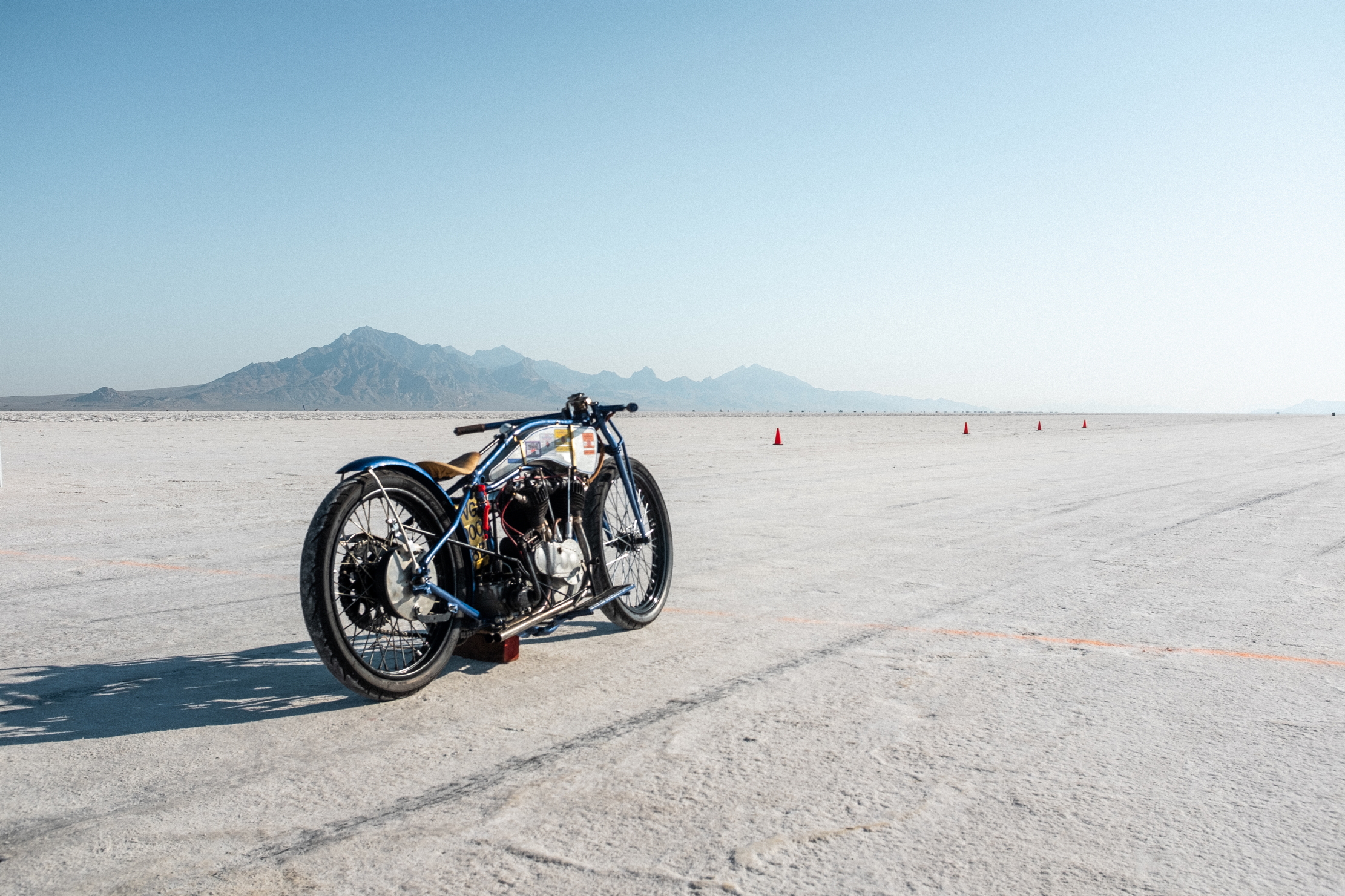

Driving arrow straight down Bonneville Speedway Road, the tarmac eventually runs out. The surface turns from dull grey to pure white, as it transforms into salt. Turn left at the end of the road, past the sign indicating you’ve reached the Bonneville Salt Flats, and things get a bit otherworldly. One of America’s most spectacular landscapes, it is the land of pastel-blue skies. And under your feet, stretching out for miles and miles, is bright white salt.
What was once part of a vast prehistoric lake covering much of Utah, the flats are the largest in the USA, covering more than 30,000 acres, with a length of 12 miles and a width of five. It is here where people travel to see the sun set slowly on the horizon, bathing the salt and the mountain backdrop in a warm glow. And it is here, for one week every August, where Bonneville Speedway, a nine mile drag strip compressed into the middle of the salt flats, comes alive with the sound of V8s and the smell of race fuel.
'It’s America. It’s hot rodding, it’s our love of cars. And this is the birthplace of speed and the hot rod. There’s a lot of heritage here, a lot of legacy.'
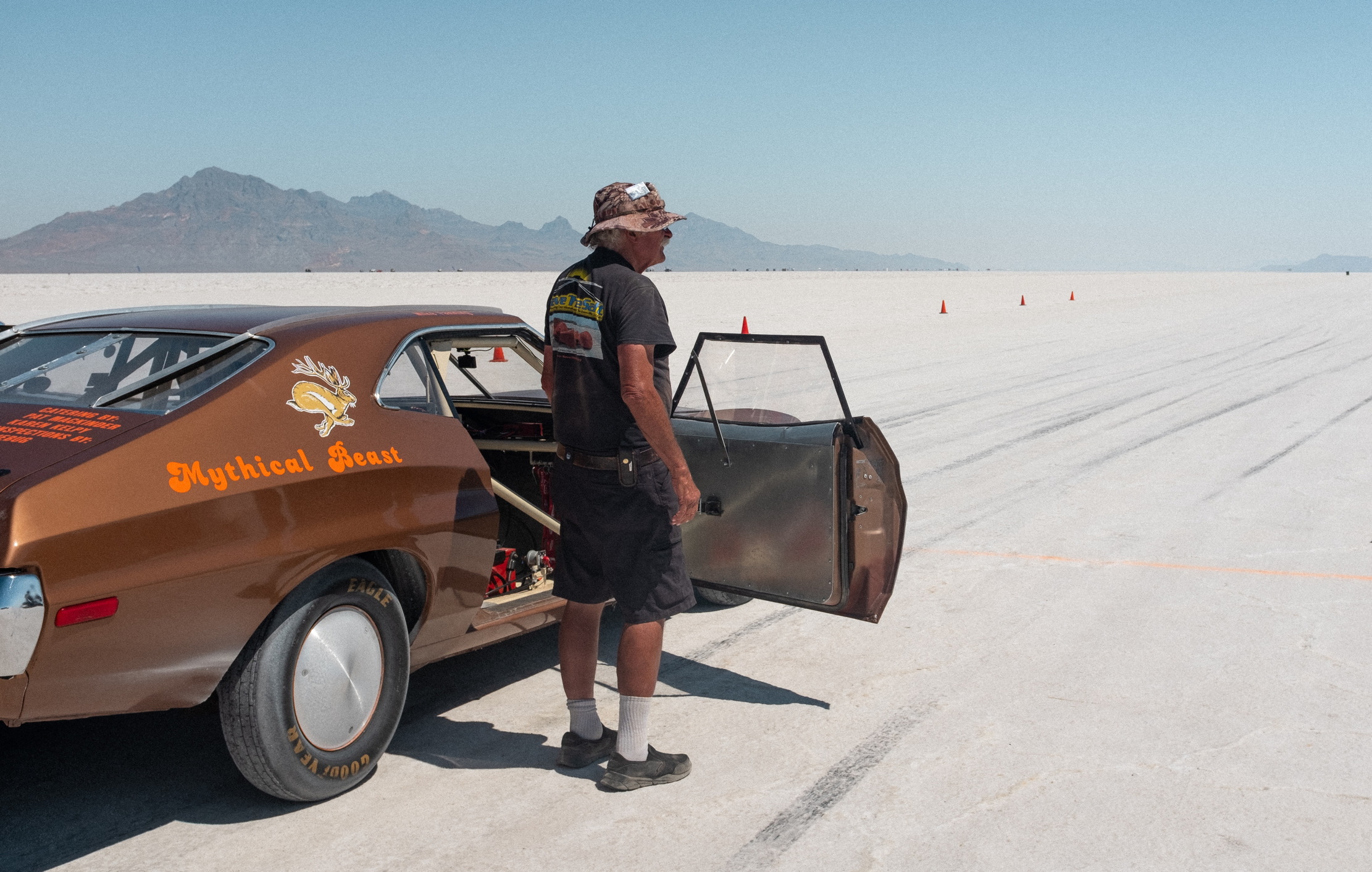
People have been racing at Bonneville since 1912. The first official land speed record was set in 1914 by ‘Terrible’ Teddy Tetzlaff, named for his heavy right foot and aggressive driving style. He ran a 300hp ‘Blitzen Benz’, hitting 142.85mph on the flats. This was at a time when the most popular car of the day, the Ford Model T, had a top speed of just over 40mph.
Bonneville became an increasingly popular place to test the limits of man and machine, and by the 1930s, was internationally recognised. British racer, journalist, and First World War dispatch rider, Sir Malcolm Campbell made it in 1935, setting a world record 301.129mph in his iconic Blue Bird, making him the first person to drive over the 300 mark. Numerous records have been broken ever since. In 1963, Craig Breedlove reached 407.447mph in Spirit of America, before breaking his own record two years later. In 1965, he hit over 600mph. This was beaten by Gary Gabelich in 1970, who reached 622.407mph in Blue Flame, which looked like a rocket and was powered by one.
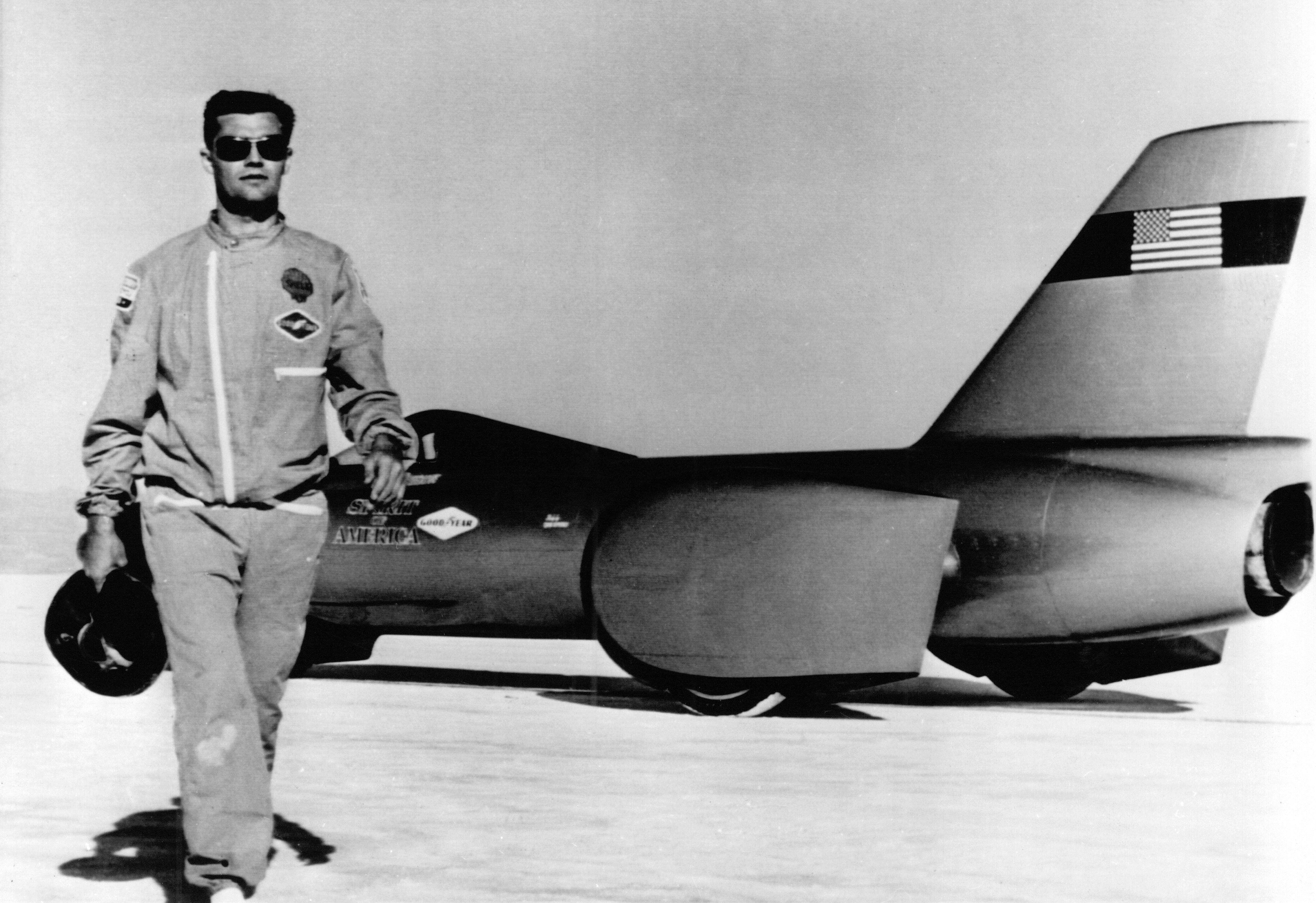
Craig Breedlove and Spirit of America, after breaking the land speed world record in 1963.
These were out-and-out land speed records. But there are records constantly being broken within Speed Week’s specific classes. In 2006, Andy Green and his JCB Dieselmax became the world’s fastest diesel, while in 2016, Roger Schroer drove the Buckeye Bullet to 341.4 mph, becoming the fastest electric vehicle. Burt Munro’s famous record in 1967, riding his 1920 Indian Scout to a staggering 184.037 mph, made it the world’s fastest Indian, and the quickest motorcycle under 1,000cc. His record still stands to this day.
New records are set every year. This year a total of 89 records were broken, across a wide array of classes. The quickest is the ’Special Construction Category’, which is for the fastest purpose-built machines in the world. Known as ‘streamliners’, they have slim, hand-built, covered-wheel bodies that cut through the air like a bullet, and are capable of speeds over 500mph. Seeing one fly across the salt is an unreal sight. This year, in the ‘unblown fuel streamliner’ subcategory, Danny Thompson set a new record with Ferguson Racing, hitting 411.948 mph. For that achievement, Thompson won’t receive a trophy, but a cap. The coveted and extremely rare black cap is given to those who hit over 400mph. A blue cap is given to those who hit over 300mph, and a still incredibly respected red cap for those who make the 200mph club.
These feats, obviously, don't come without risks. Phil Tolley was helping out a friend this year, after previously competing himself. ‘I started coming to Bonneville as a kid - ’81 was my first trip. We run a 1927 Ford flathead in the vintage class. It’s America. It’s hot rodding, it’s our love of cars. And this is the birthplace of speed and the hot rod. There’s a lot of heritage here, a lot of legacy.’ This year, the car his team ran under Empire Special Racing broke a connecting rod at 301mph, destroying the engine and ending the week early. The driver, Joel Wirth, was attempting to beat his own class record, pushing it from 303.979mph to the 320mph range. ‘Nobody was hurt, just the bank balance’, Phil tells me.
Exquisite houses, the beauty of Nature, and how to get the most from your life, straight to your inbox.
This sadly wasn’t the only accident this year. Racing on day two of Speed Week, veteran driver Chris Raschke was attempting a new land speed record when he lost control at 283mph, around 2 1/2 miles into his run. Raschke was treated for his injuries, but passed away at the scene. His vehicle, Speed Demon, was the most decorated in the history of the sport, setting more records than anything else, and Raschke even set the fastest time in it at the 2024 Speed Week, attesting to his skill and gallantry.
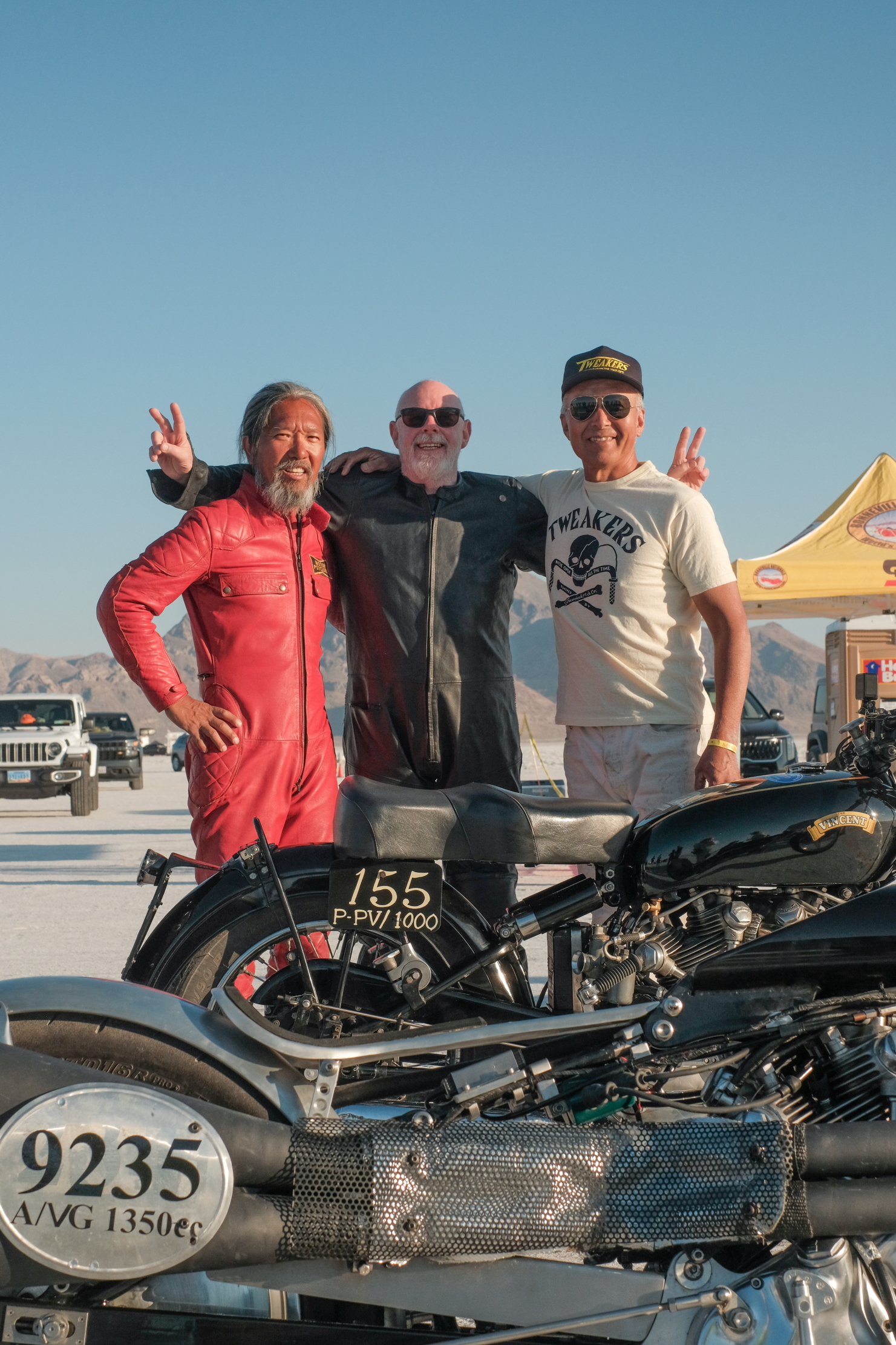
When I arrive at Bonneville two days later, the racing has resumed, and the line-up before the start line is staggering, with an eclectic mix of vehicles that makes Wacky Races look dull. There are the streamliners on the faster course 1, with their entourages tweaking and making last minute changes. Behind them are a series of chopped up 1920s and 1930s Ford Roadsters, barely recognisable as the tall, early road cars they once were. The definitive hot rod, in Bonneville spec they feature varying sizes of V8 engine, sloping roof lines or no roof at all, and stretched aerodynamic bodies. Some of these century-old machines are capable of nearly 300mph.
Cars of every shape and size queue up as early as 6.30am each day, when the salt opens. Heavily modified road cars sit alongside stretched dragsters, pick up trucks, 1950s sedans and even 1990s Japanese Kei cars including a 1995 Suzuki Cappuccino (which set a record, hitting 114.352mph). The vast majority of these machines have been built in someone’s back yard. The streamliners may have their own sponsors and large budgets, but many of those competing at Bonneville have built their creation either on their own or with friends in their spare time, with limited budgets and large imaginations. As long as it fits within a class’s respective parameters, everything is welcome, and respect is given to all.
This is also true for two wheels. There were a wide range of machines and personalities taking to the salt on two wheels, but all shared the same enthusiasm and grit. Like those driving the cars, many showed up with their own creation and a group of friends to share the experience with. Richard Watts, part of the Australian-based Vincent Racing Team, ran a 1950 1350cc Vincent with Malcolm Hewett in the saddle. ‘We’re just a group of mates. We don’t have any high power sponsors. We just shipped our bike over from Australia, like the World’s Fastest Indian. After today, we’ll be the world’s fastest Vincent.’ They were, setting a new record at 169.773mph.
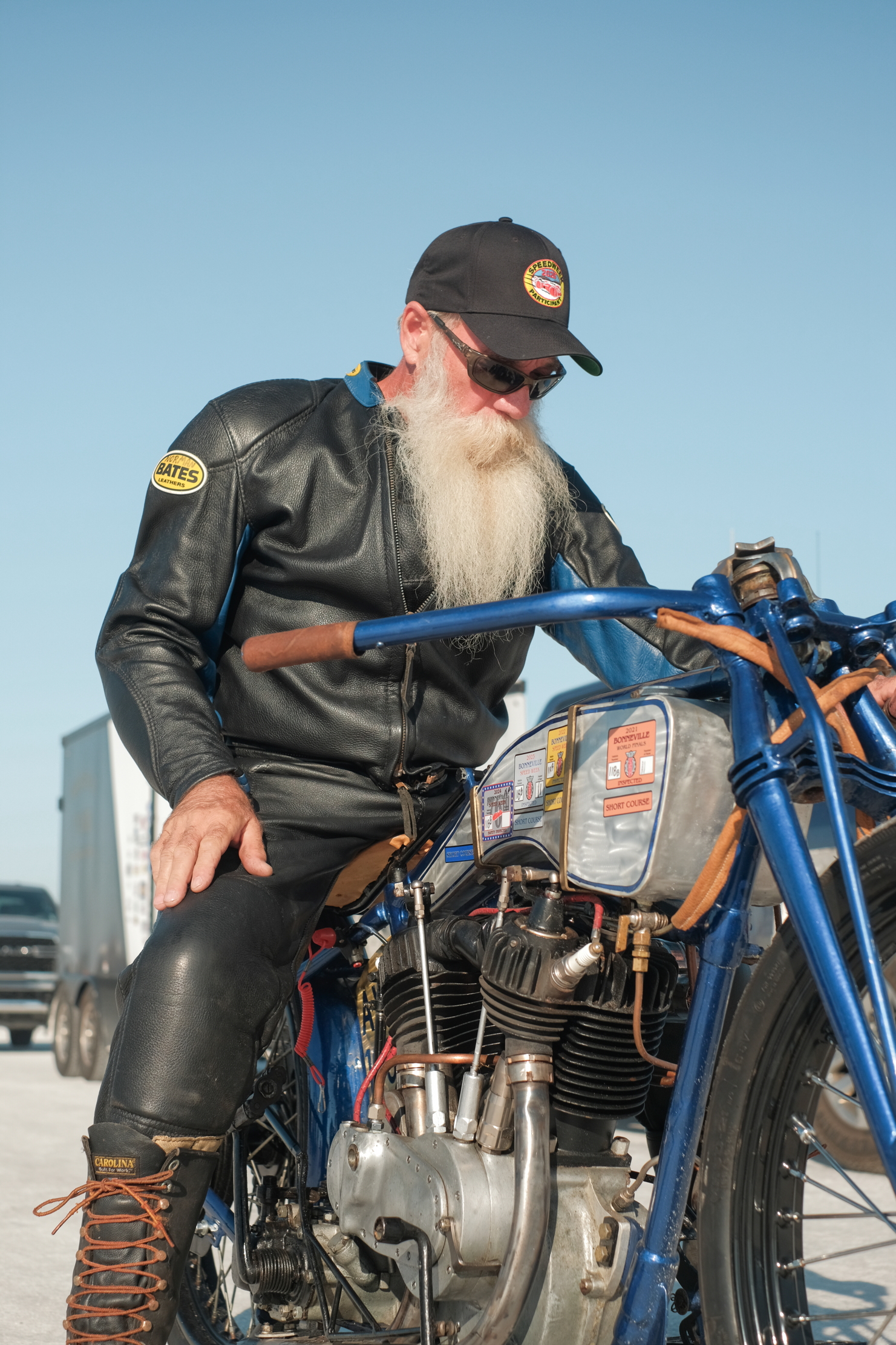
For those travelling from overseas, Bonneville isn’t the easiest place to get to. Richard, like many including myself, travelled to Los Angeles before making the 10-hour drive to Bonneville. ‘To come from Australia, we crate the bike up and put it in a sea freighter. We fly over. Hire a truck, hire a trailer. Go and pick it all up and then drive from LA to here.’
There are competitors from all over the world, including Japan, Sweden, Great Britain, Wales and Canada who make the pilgrimage. Other, more local competitors will then hire out or lend tools to those who couldn’t bring everything they needed. This is part of what makes Bonneville such a community-led event. Everyone is in the same boat, trying to squeeze out every mph. There is a feeling of togetherness and support as people spur each other on. It’s part of what keeps people coming back year after year.
One woman who has returned numerous times, as evident by the patches on her shirt, is Judy Sights. The former competitor is now one of the volunteers who helps run Speed Week. At a sprightly 87 years old, she is all smiles as she talks about her experience at Bonneville, which she first entered in 1998. ‘I raced with a Mazda Miata, after we put a turbo in it. It got up to 174mph, although that wasn’t me. I had to back off because I didn’t have the strength to get in and out of the car. To be safe, you have to prove you can jump out.’ Judy no longer races, but her family still has the car. ‘We broke on the first run, but that’s ok, that’s what it’s all about’.
'I used to drive through Vegas to come here and they’d say, “don’t you want to stop and gamble?” I’d rather gamble up here with a car'
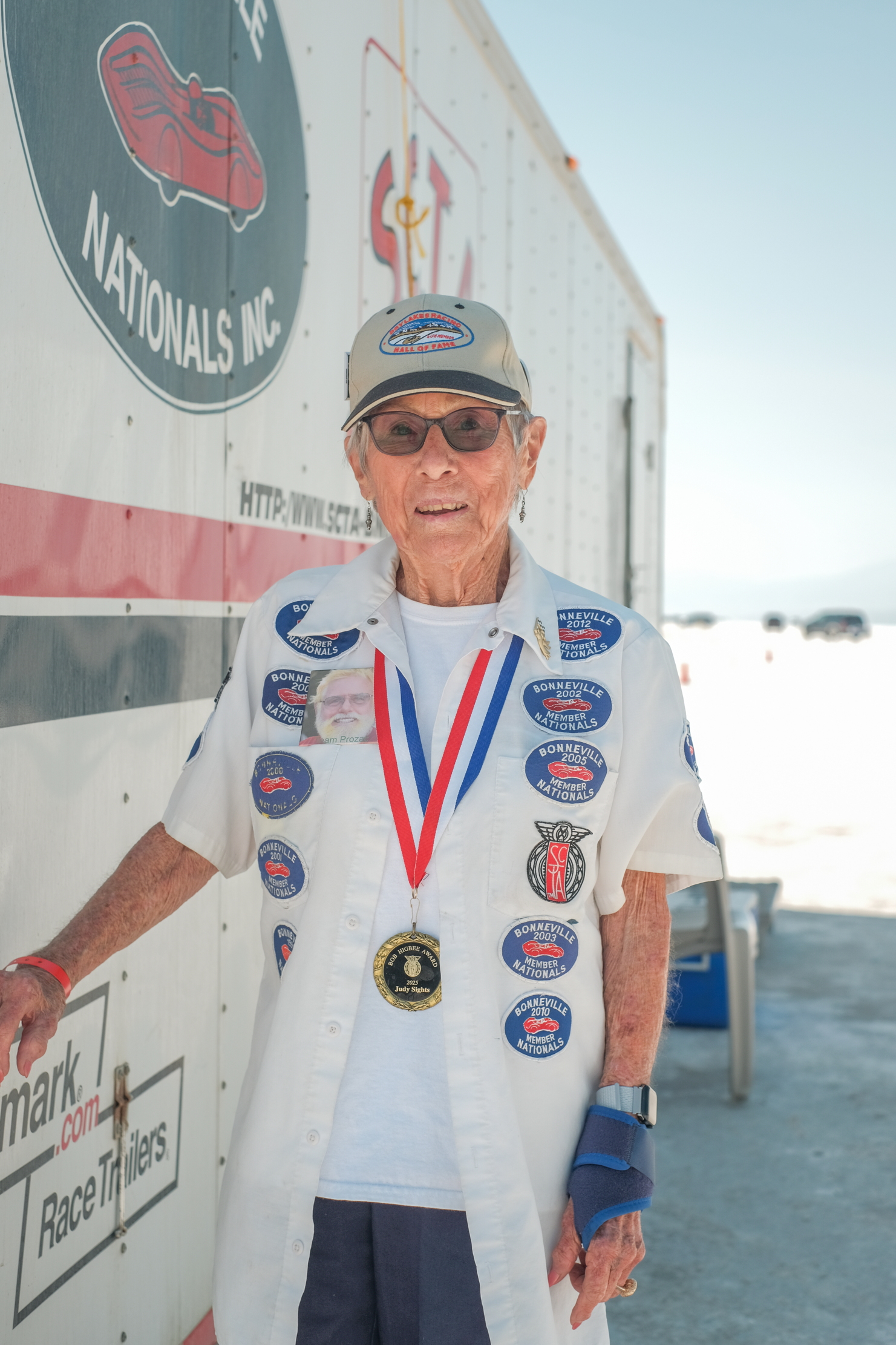
I ask her what’s special about Bonneville. What does it do for her? ‘It gives me goosebumps. I used to drive through Vegas to come here and they’d say, “don’t you want to stop and gamble?” I’d rather gamble up here with a car.’ A long time volunteer, Judy continues the work of fellow Bonneville legends like ‘Mr Salt’ Bob Higbee, chief starter for more than five decades, and her husband, Bob ‘Gear Grinder’ Sights, who passed away last September. ‘It’s his fault that I’m here’, she jokes. And like many of the people who are passionate about this event, she’s not going away any time soon. ‘My passion is just helping everybody. There’s no competition, in a way. Yeah, you want to compete to see if you can beat somebody, but you want to help and support people.’
Bonneville is the kind of place you don’t want to leave. It has the heritage, the unique landscape, scores of friendly people and some seriously wild machines. It represents everything that’s great about motorsport, and does so in a place that’s hard to get to, but welcoming once you’re there.
They say that if you come here you can get ‘Salt Fever’, an overwhelming obsession to see, hear and drive on the salt. You must return, you must get involved, you must race. It’s not difficult to see why.
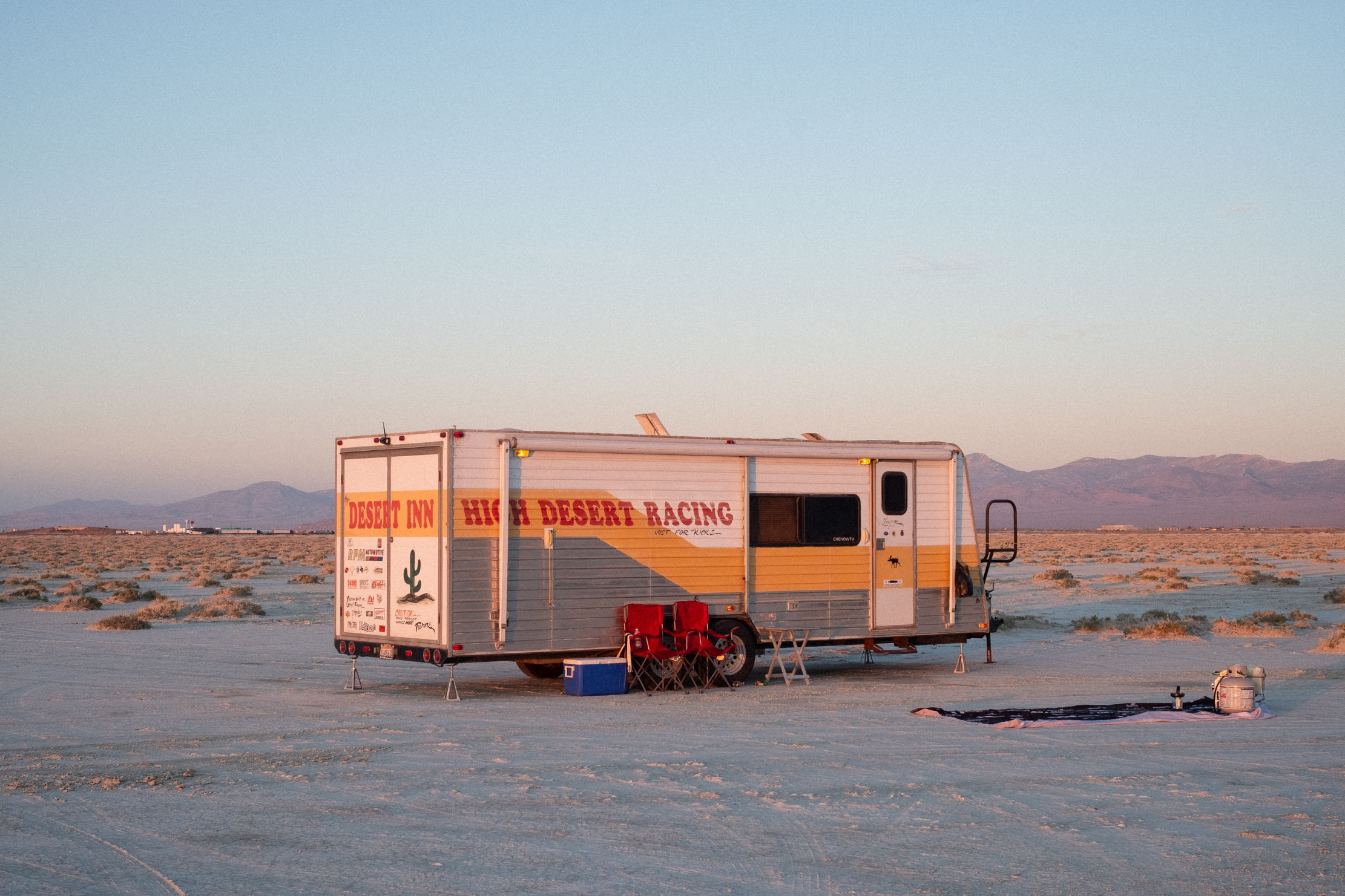
Charlie Thomas is a freelance writer, journalist and photographer. His work is an extension of his interests and hobbies, which include travel, motoring and style. Growing up in Folkestone, Kent and now based in London, an appreciation of design was developed at an early age thanks to his father and uncle, while a love of storytelling sees him seek out interesting features around the world. His writing and photos can be found in titles including HTSI, GQ, The Times, The Telegraph and Robb Report.
-
 Can you buy happiness? The latest list of Britain's happiest places, and what you could end up with if you moved there
Can you buy happiness? The latest list of Britain's happiest places, and what you could end up with if you moved thereCan you buy happiness? Of course not, but you can buy a nicer house in a better town... and, well, that's probably going to help quite a bit.
-
 Is the British Museum's attempt to save a Tudor-era pendant with links to Henry VIII proof that the institution is on the up?
Is the British Museum's attempt to save a Tudor-era pendant with links to Henry VIII proof that the institution is on the up?After years of neglect and controversy, Britain's premier cultural institution seems to be finding its feet again.
-
 Is the British Museum's attempt to save a Tudor-era pendant with links to Henry VIII proof that the institution is on the up?
Is the British Museum's attempt to save a Tudor-era pendant with links to Henry VIII proof that the institution is on the up?After years of neglect and controversy, Britain's premier cultural institution seems to be finding its feet again.
-
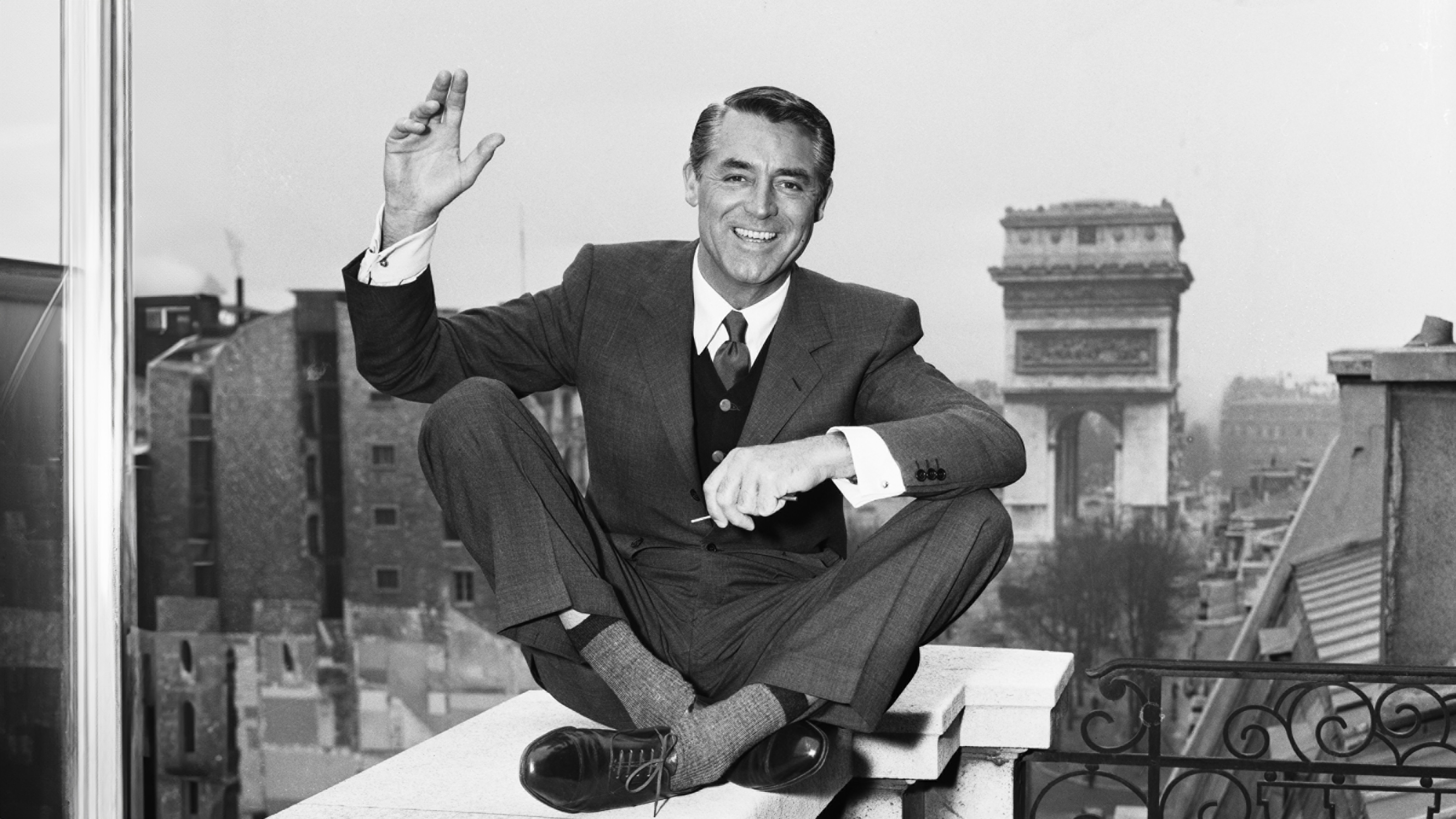 Suit yourself: I’m a 49 year-old man-about-town and I’ve never owned a suit
Suit yourself: I’m a 49 year-old man-about-town and I’ve never owned a suitWhen Hugh Smithson-Wright turned up to Country Life's annual Gentleman's Life party sans suit, it sparked a passionate conversation about why the formal fashion just isn't for everyone.
-
 Meet the British perfumers squeezing landscapes into scents
Meet the British perfumers squeezing landscapes into scentsThe nuances of modern perfumery now allow a single drop to evoke an entire landscape. Amie Elizabeth White explores the native houses hitting the right notes
-
 Sweet civilisation: What do you get when you ask architects to compete in a gingerbread competition?
Sweet civilisation: What do you get when you ask architects to compete in a gingerbread competition?The Gingerbread City is back in London’s Kings Cross. Lotte Brundle pays it a visit.
-
 Sophia Money-Coutts: A snob's guide to meeting your in-laws for the first time
Sophia Money-Coutts: A snob's guide to meeting your in-laws for the first timeThere's little more daunting than meeting your (future) in-laws for the first time. Here's how to make the right kind of impression.
-
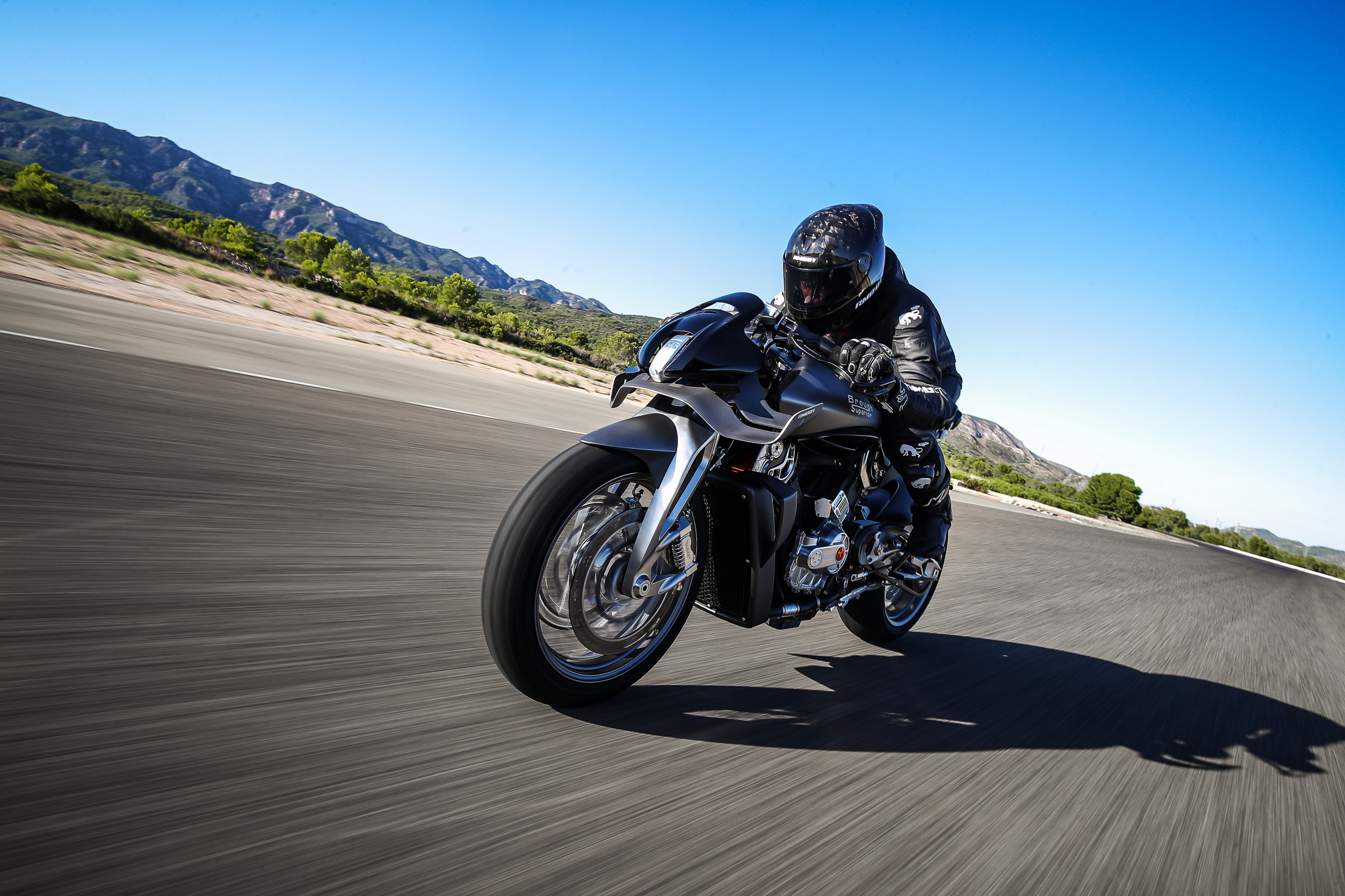 This machine is what happens when the Rolls-Royce of motorbikes and the most innovative of watchmakers join forces
This machine is what happens when the Rolls-Royce of motorbikes and the most innovative of watchmakers join forcesBrough Superior and Richard Mille, two brands renowned for perfection, have created something that is exactly that.
-
 ‘Each one is different depending on what mood I’m in, how I'm feeling and how my energy is’ — meet the carver behind Westminster Hall's angel statues
‘Each one is different depending on what mood I’m in, how I'm feeling and how my energy is’ — meet the carver behind Westminster Hall's angel statuesBespoke woodcarver William Barsley makes unique scale replicas of the angels that gaze over Westminster Hall, the oldest part of the palace of Westminster.
-
 If chess is 'the supreme board game', then it deserves to be played on boards like these
If chess is 'the supreme board game', then it deserves to be played on boards like theseChess sets and backgammon boards are a familiar sight on drawing-room tables, but one expert Highland woodworker is refashioning their forms in beautiful new ways.
